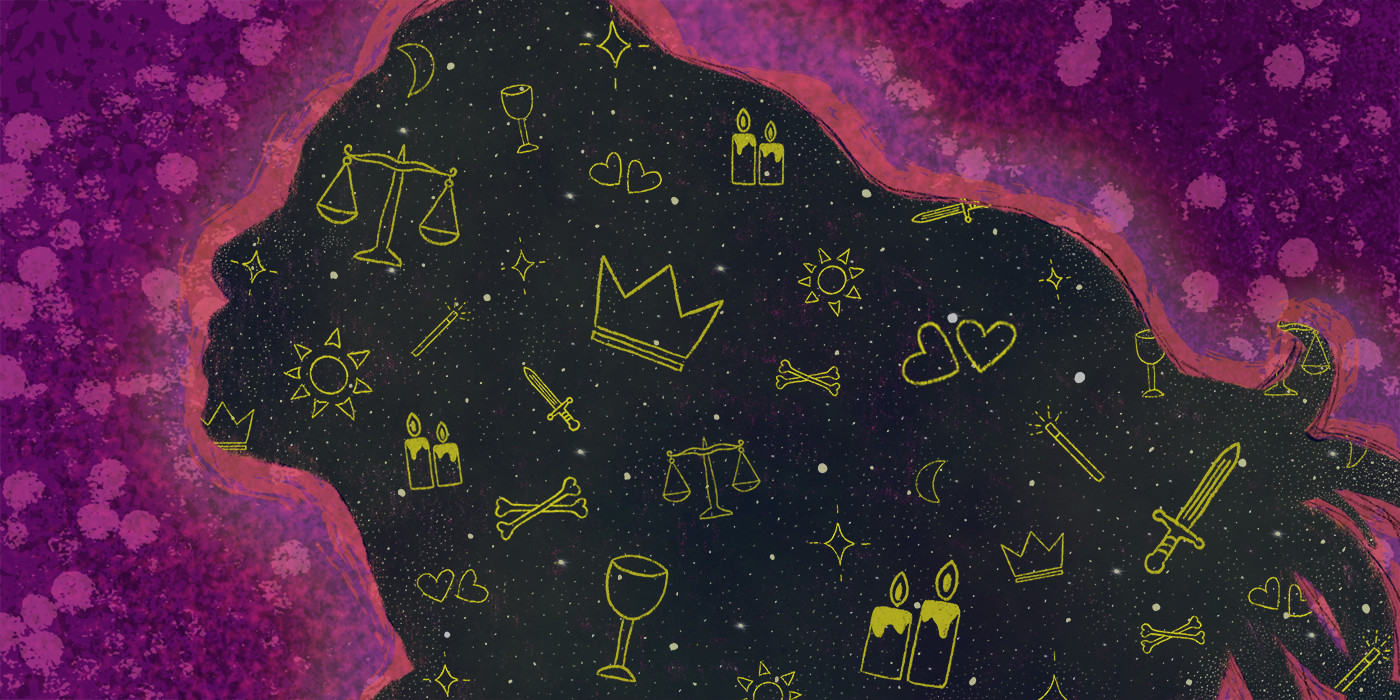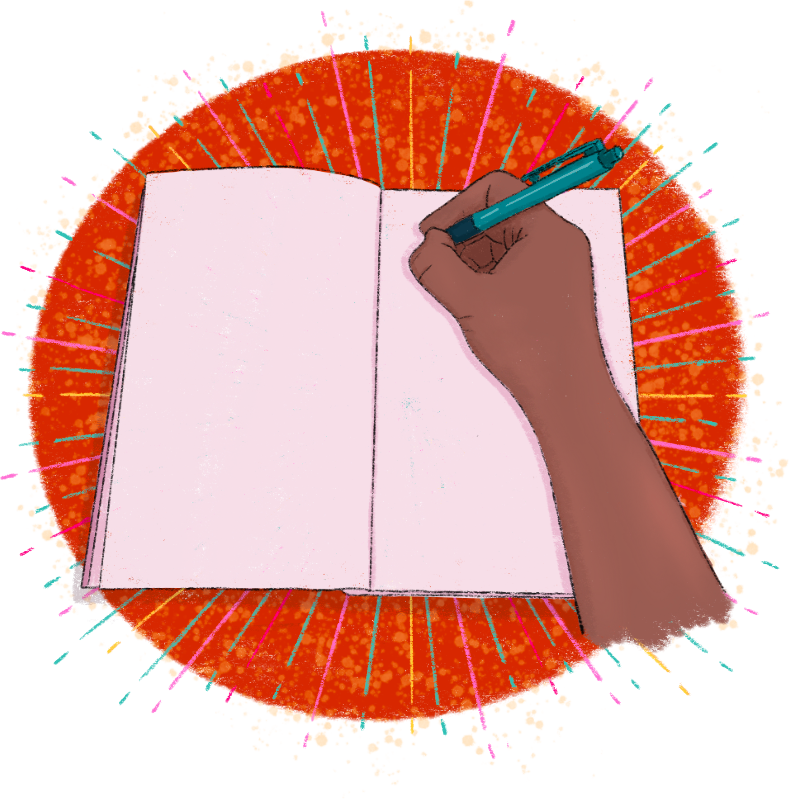
Given the never-ending chaos of These Times, more people are turning to spiritual tools to help cope with our uncertain realities. In addition to astrology, one of the most popular of these New Age modalities is tarot, which has offered people guidance through life — both good and difficult times‚ since at least the 1700s.
Now that most of our lives look very different than we would have imagined (would anything surprise us anymore?), there’s no time like the present to pick up a deck and see if this centuries-old spiritual tool offers any relief for you as you navigate hard decisions, internal dilemmas, and an uncertain future. It offers a low-cost (decks start around $20) way to pause, reflect, and turn inward for a moment of calm and clarity.
If you’re a complete beginner, a relative novice, or just looking to expand your tarot know-how, we’ve compiled a guide to get you started, including how to choose the right deck, which spreads to use based on your intention, and advice from experienced readers on how to get the most out of your cards.
Sign up for The Bold Italic newsletter to get the best of the Bay Area in your inbox every week.
Which deck should you use?
First, it helps to know a bit about tarot’s history in order to make a more informed choice about which deck is right for you.
While a number of decks came before the Rider-Waite deck in tarot’s illustrious history (pun intended), most tarot professionals today advise that beginners start with the iconic Victorian-era deck, since the majority of contemporary decks are based on its pictorial structure — specifically, it’s minor arcana cards.
To back up a step, all traditional tarot decks are made up of two parts: The major arcana cards—the first 22 picture cards in the deck—are based on mythological and religious iconography and are fairly universal throughout all decks. The 56 minor arcana cards are organized into four suits—pentacles, staves, swords, and cups—each with 10 number cards and four court cards, much like the 52-card playing card decks we use for games like poker.
The Rider-Waite illustrations diverged from earlier “pip” decks, like the Tarot of Marseilles, by illustrating each number card with its own unique scene, instead of a simple geometric arrangement of the cards’ four suits.
In addition to dramatic changes to the structure of the minor arcana during this time, both Waite and Aleister Crowley, creator of the Thoth deck, were inspired by the increased scholarship around tarot and their participation in the secret society called the Hermetic Order of the Golden Dawn, which connected tarot to practices like numerology, kabbalah, and astrology, as well as Greek and Egyptian mythology. Their belief was that the Marseille deck and other previous pip decks suggested connections to some of these fields of study, so both Crowley and Waite overtly worked symbols from these practices into their decks.

To learn any of these major decks at home, you should pick up a guidebook that goes into detail about the history, illustrations, and meanings specific to the author and illustrator’s intentions. For learning the Rider-Waite, I recommend picking up Seventy-Eight Degrees of Wisdom: A Tarot Journey to Self-Awareness by Rachel Pollack, who discusses at length the narrative arc of the major arcana cards based on their order and position in the deck. For the Thoth deck, I dare you to try to get through the wild and woolly text that is Aleister Crowley’s The Book of Thoth: Egyptian Tarot. Once you’ve had enough, head over to Understanding Aleister Crowley’s Thoth Tarot: New Edition by Lon Milo DuQuette, but be warned that it doesn’t come with any easy answers. (You’ll find that nothing is easy in the Thoth deck.) And finally, if you prefer a more traditional pip deck, grab Yoav Ben-Dov’s The Marseille Tarot Revealed: A Complete Guide to Symbolism, Meanings, and Methods, which also functions as a great beginner’s guide to tarot and its history, since the Marseille Tarot is considered to be the first known deck.
If you are put off by the Eurocentric, heteronormative symbolism, there are dozens of newer decks to choose from that offer more diverse, nonbinary, or nongendered imagery. Bay Area artist and tarot reader Casey Zabala created the Wanderer’s Tarot, which has simple line work and abstract symbolic references to “illuminate my feminist magical perspective. As a feminist, it felt important to focus on female and nonbinary beings within the deck and to create space for femme/queer/androgynous tarot interpretations. Representation is so important in all spaces, but also within the world of tarot.”
Iris Meredeth Bell, who has been reading tarot for more than 30 years and now manages The Raven’s Wing Magical Co. bookstore (which has a branch in Oakland), advises, “The most important thing about choosing a deck is finding one that resonates with you. If the images aren’t compelling right away, you aren’t likely to practice with them.”
Regardless of which deck you choose, it is vital to start with a strong foundation of knowledge and develop your own personal relationship with your cards. Below are some guidelines on how to use the cards to best support you and your daily growth in this time of extreme change.
1. Get grounded before each reading
Reading tarot requires mindfulness, which can be challenging if you find yourself caught up in your emotions or a racing mind. (Who doesn’t?) Amelia (who prefers not to use a last name), founder of Amber-Lee Alchemy, suggests starting out a reading by pouring yourself a cup of tea or performing some other ritual, like watering houseplants or spreading out a nice cloth under the cards, to “open space” for a clear reading.
“Stirring, pouring, watching milk swirl, smelling the brew, and taking your first sip — when all five senses are stimulated mindfully in this way, the body is able to naturally slip into a relaxed state, ready to read,” Amelia says. “The more times you use these props to ground and ‘open space,’ the more your mind is trained to recognize that you are about to do a reading. It will be easier to tune in anywhere, at any time — no matter how many kids, pets, or emails try to distract you.”
She also suggests doing your readings before you tap into the news or social media. “Tarot cards are a mirror for your own subconscious — so, if you fill your morning with scroll upon scroll of how the world keeps trying to eat itself and then turn to your cards for guidance, chances are you will be presented with a slew of panicky advice.”
2. Develop a daily practice
All the tarot readers I asked suggested creating a daily ritual with the cards, such as pulling a card in the morning and/or one at night to bookend the day. This two-pronged approach gives you a chance to educate yourself about the cards’ real-life meanings. “Using this practice, you’ll start to forge an intimate relationship with your deck,” Zabala says.
To follow your progress over time, Amelia suggests keeping a tarot journal. Label four columns with “Date,” “Tarot Card,” “Meaning,” and “How Did It Go?” “Add a little mindfulness practice into your daily routine, and really get to know your cards… You’ll be amazed how accurately the cards can prep you for your day ahead,” she says.
3. Establish your framework up front
To get the best possible reading, establish your process and intentions up front. For example, will you be interpreting reversed cards (the ones that appear upside down) or not? How many cards are you going to pull? Dozens of spreads exist to give you different types of information.
As you’re starting out, keep it simple with fewer cards, like the one-card-a-day pull suggested above or a three-card spread. A common three-card layout is past, present, and future—one card for each theme laid out in a row, to be read from left to right.
If the cards give you an answer you don’t like, don’t spin your wheels trying to get a different one.
Jessica Lanyadoo, a longtime tarot reader and the host of Ghost of Podcast, suggests in her tarot how-to videos on her Patreon page that it’s best to establish these logistics in advance so you can get the clearest answers from the cards, and so you aren’t tempted to change them halfway through. Plus, it will help the cards tailor the best answer to your questions and fit your spread.
Part of tarot’s appeal is that it allows you to tap into something bigger than yourself in order to channel information that may help you or others. What one thinks this higher power is can differ from person to person—is it the cards, your spiritual guides, or the universe?—but whatever this energy represents to you, it responds best to clarity of purpose and good intentions, just like people do.
4. Be honest with yourself
It can be challenging to read tarot objectively, especially for yourself or your loved ones. Sometimes you have to swallow a bitter pill or two. While it may be tempting to ignore cards you don’t like, Amelia suggests using your negative reaction as a chance for growth: “Approach it with curiosity — look into why that might be, what does it trigger for you? It takes discipline, but it’s the best way to get down and dirty with your subconscious mind.”
5. Don’t be afraid to go off-book
Try to balance objectivity with your own personal interpretations as they come up. The best readings are more than a sum of their parts. Knowing the meaning of each individual card is as important as being able to synthesize the information to offer a bigger picture solution. “Try to read the image on the cards in your own words before reaching for the book,” Bell says. “Allow yourself to imagine a story taking place on the card, and put the people in the reading into that story.”
6. Keep your readings open-ended and judgement-free
Reading tarot for friends can be a fun way to continue learning about the practice. But, Bell warns, “Just be certain to keep your own opinions about your friends’ lives separate from the messages coming from the cards.”
They are trusting you to be fair and nonjudgemental, as well as accurate, so try offering your interpretations as suggestions. During your reading, use words like “this might happen” or “it seems like the cards are saying…” to avoid them taking it personally. When you start to learn more about the cards, you can point to images or elements in the cards that support your case so your friend doesn’t think it’s you saying they should leave their dirtbag boyfriend.

7. Ask the right questions
One of the challenges of using tarot is asking the right questions. For example, you may ask a question: “Will my date go well?” But in your heart, you actually want the answer to something like: “Will I ever not be single?” Lanyadoo says the cards will often respond more to the feeling behind your question than to the question itself.
Another pitfall is asking the wrong type of question or asking something that the tarot can’t answer. It’s fine to ask the cards for predictions, but your time might be better spent asking for guidance on the right approach to take with future events. “The future is still in the making,” Bell says. “The cards are much better at looking into the reasons and motivations that the client is working with.”
In the case of asking how a date might go, a better question might be: “What is the best way to attract someone new into my life?” Or: “What should I focus on right now to make me feel more fulfilled?”
On that note, consider it a best practice to not use tarot or any other kind of magic to spy on others, unless it’s to support you taking the highest possible road in response to the information. “There is no limit to what you can ask the tarot for guidance on,” Zabala says. “However, it’s important to use the tool for self-discovery. It’s wise to frame your questions from an ‘I’ perspective, rather than to ask for insights about another person in your life.” Not only is it a waste of your time to focus too much on other people, but it also creates unhealthy boundaries and still doesn’t solve the question of how you should proceed with your own life.
If the cards give you an answer you don’t like, don’t spin your wheels trying to get a different one. “It stresses everyone out,” Bell says. “If the cards say your sweetheart isn’t coming back, then that’s what they are going to say tomorrow and the next day and the next day.”
8. Don’t treat tarot like a WebMD
Finally, while it’s tempting to treat your tarot cards like your own private WebMD, it’s best not to ask about health matters unless you really know what you are doing. (Also, don’t treat WebMD like a real doctor in the first place.) If you’re actually sick, you should see a trained professional. And definitely don’t ask the cards when you are going to die. Do you really want to know? No.
Ultimately, tarot is not a solution to all your problems, a way to spy on your exes, a way to predict the future, or an excuse to spiral into anxiety. But if you use it right, it can be helpful as a guide on your personal growth journey, a way to get a bigger picture of your life when you feel lost in the weeds, and a moment of reflection to bring yourself back into the present.

Read more like this:







